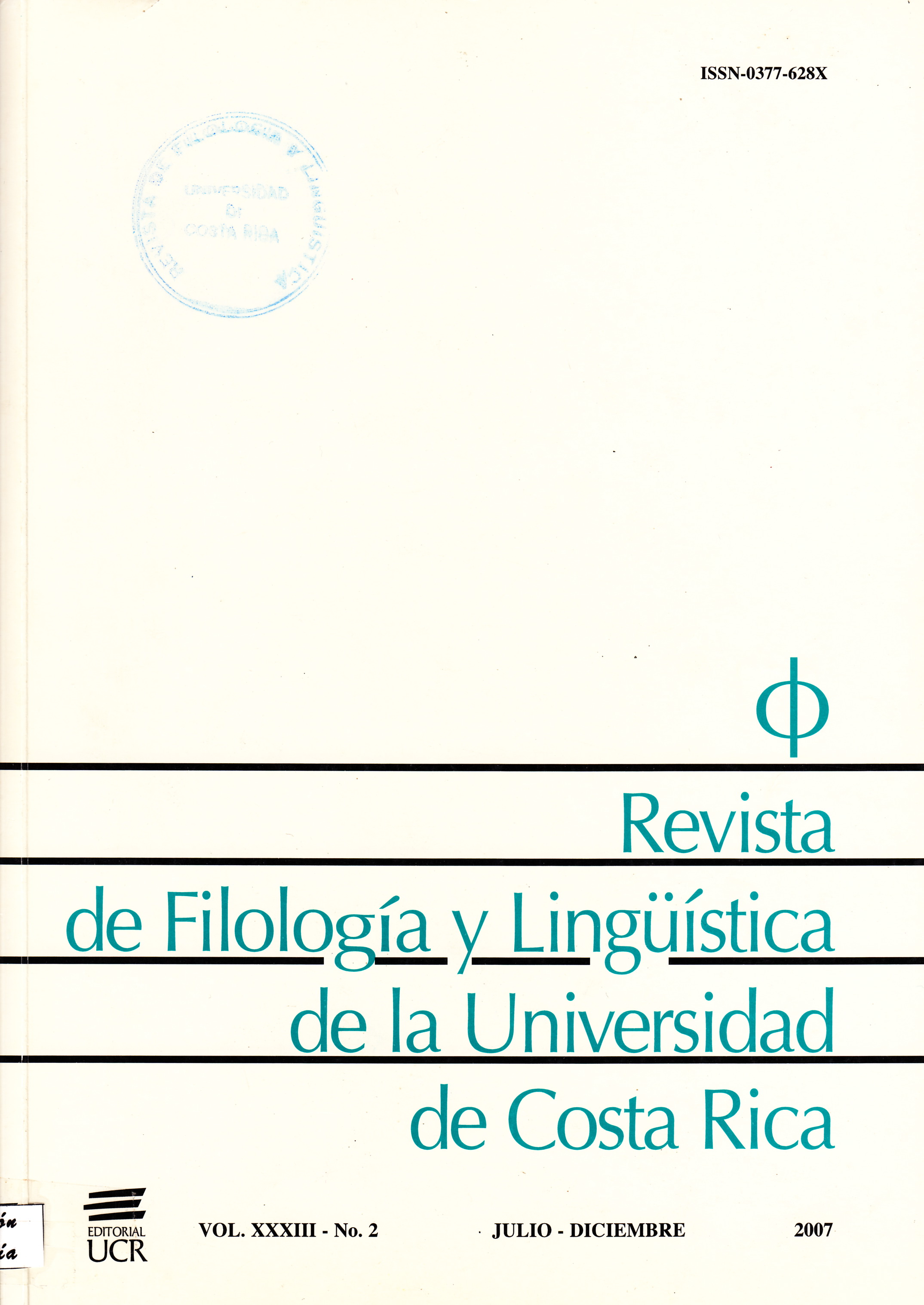Abstract
This article analyzes the text "The Spirit of My Land" with the intent of determining of what the critical vision consists that Yolanda Oreamuno constructs around farmers. Forms of comparison are studied as presented by the text, and emphasizes the selection of the insect called the cicada as the principle generating nucleus of semiosis. The analysis allows as well to observe the discursive elaboration of a contradictory image of the farmer than what has predominated in the works of other authors in Costa Rican literature in the last three decades of the twentieth century, principally, through a ideological fracture which affects the collective national imagery.References
Angenot, Marc y Régine Robin. 1991. “La inscripción del discurso social en el texto literario”. Sociocríticas: Prácticas textuales. Cultura de fronteras. Pierrete Malcuzynski (ed.). Amsterdam-Atlanta: Rodopi, 51-79.
Aristóteles. 1963. Poética. Buenos Aires: Emecé Editores.
Luján, Fernando. 1967. Tierra marinera. San José, Costa Rica: Editorial Costa Rica.
Oreamuno, Yolanda. 1961. A lo largo del corto camino. San José, Costa Rica: Editorial Costa Rica.
Quesada Soto, Álvaro. 1986. La formación de la narrativa nacional costarricense. San José, Costa Rica: Editorial de la Universidad de Costa Rica.
Real Academia Española de la Lengua. 1992. Diccionario de la lengua española. 21ª ed. Madrid: Espasa Calpe.
Ross, Herbert. 1973. Introducción a la entomología general y aplicada. Barcelona: Ediciones Omega.
Salazar Herrera, Carlos. 1963. Cuentos de angustias y paisajes. San José, Costa Rica: Editorial Costa Rica.
Soto de Ávila, Víctor. 1961. “Yolanda Oreamuno”. Yolanda Oreamuno. A lo largo del corto camino. San José, Costa Rica: Editorial Costa Rica: 317-20.
Step, Edward. 1960. Maravilla de la vida de los insectos. Madrid: Espasa Calpe.
Tresidder, Jack. 1999. Diccionario de los símbolos. México: Grupo Editorial Tomo.

